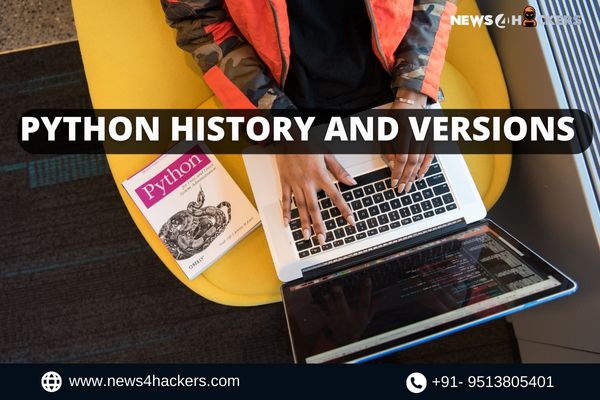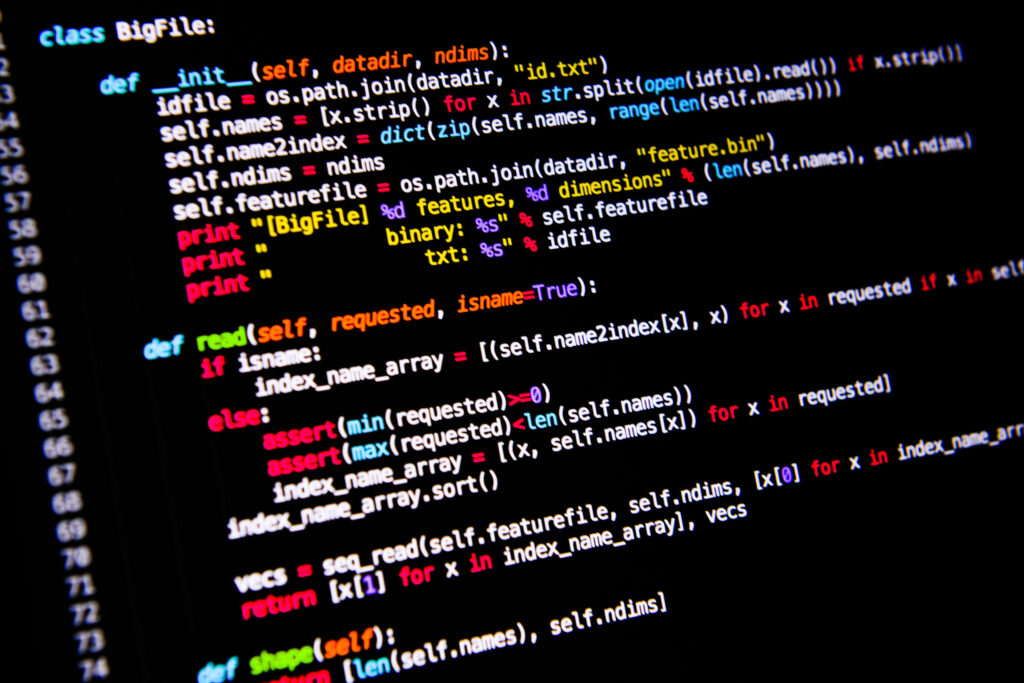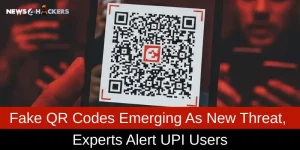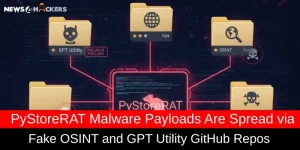Python History and Versions

Python History and Versions
- The establishment of Python took place during the latter half of the 1980s.
- The development of the Python programming language commenced in December 1989 under the guidance of Guido Van Rossum at the Centrum Wiskunde&Informatica (CWI) in the Netherlands.
- In the month of February in the year 1991, Guido Van Rossum made the code publicly available by sharing it on alt.sources. This code was specifically designated as version 0.9.0.
- Python 1.0 was introduced in 1994, incorporating novel functionalities such as lambda, map, filter, and reduce.
- Python 2.0 included several notable enhancements, including the incorporation of list comprehensions and the implementation of garbage collection mechanisms.
- The release of Python 3.0, popularly known as “Py3K”, occurred on December 3, 2008. The purpose of its design was to address the inherent deficiency in the language.
- The ABC programming language is widely regarded as the precursor to the Python language. It possessed the ability to handle exceptions and establish connections with the Amoeba Operating System.
- There are several programming languages that have had an impact on the development and evolution of Python:
- ABC language.
- Modula-3
Why the Name Python?

- The selection of the name “Python” is grounded in a factual basis. Guido van Rossum was perusing the screenplay of the esteemed British Broadcasting Corporation (BBC) comedy series titled “Monty Python’s Flying Circus”. The events occurred throughout the late 1970s.
- Van Rossum desired to choose a name that has the qualities of uniqueness, orderliness, and a touch of enigma. The decision was made to designate the newly developed programming language as Python, drawing inspiration from the renowned British comedy series “Monty Python’s Flying Circus.”
- The comedy series exhibited a high degree of creativity and embraced a non-linear narrative structure. The text encompasses a wide range of topics. Consequently, the observed phenomenon exhibits a sluggish and erratic nature, rendering it highly captivating.
- Python is a very adaptable programming language that finds extensive application across various technical domains, including but not limited to Machine Learning, Artificial Intelligence, Web Development, Mobile Application Development, Desktop Application Development, and Scientific Calculation.
Python Version List
The Python programming language undergoes regular updates to incorporate new features and provide enhanced support. Python has seen numerous updates since its initial release in 1994, leading up to the most recent version.
Below is a list of Python versions along with their respective release dates:
| Python Version | Released Date |
| Python 1.0 | January 1994 |
| Python 1.5 | December 31, 1997 |
| Python 1.6 | September 5, 2000 |
| Python 2.0 | October 16, 2000 |
| Python 2.1 | April 17, 2001 |
| Python 2.2 | December 21, 2001 |
| Python 2.3 | July 29, 2003 |
| Python 2.4 | November 30, 2004 |
| Python 2.5 | September 19, 2006 |
| Python 2.6 | October 1, 2008 |
| Python 2.7 | July 3, 2010 |
| Python 3.0 | December 3, 2008 |
| Python 3.1 | June 27, 2009 |
| Python 3.2 | February 20, 2011 |
| Python 3.3 | September 29, 2012 |
| Python 3.4 | March 16, 2014 |
| Python 3.5 | September 13, 2015 |
| Python 3.6 | December 23, 2016 |
| Python 3.7 | June 27, 2018 |
| Python 3.8 | October 14, 2019 |
Tips to Keep in Mind While Learning Python
A frequently posed inquiry among novice individuals pertains to the optimal approach for acquiring proficiency in the Python programming language. The question at hand holds significance and serves as a fundamental inquiry, as the primary undertaking in acquiring proficiency in any programming language necessitates an understanding of the process of learning itself.
Adopting effective learning strategies facilitates the rapid acquisition of knowledge and proficiency in Python programming, hence enabling one to excel as a competent developer in this language.
This section will explore several considerations that should be taken into account when acquiring proficiency in the Python programming language.
1. Make it Clear Why We Want to Learn
It is imperative to establish a clear objective prior to commencing the acquisition of Python programming skills. Python is a programming language that is widely regarded for its simplicity and extensive capabilities. The software package encompasses a variety of libraries, modules, in-built functions, and data structures. If the objective is not clearly defined, the process of acquiring knowledge in Python may become tedious and lacking in variety. Without a well-defined objective, it is unlikely that you will successfully complete the task.
Firstly, it is imperative to ascertain the underlying motive for engaging in the process of learning. This motivation can encompass a wide array of factors, including but not limited to the acquisition of new knowledge, the ability to undertake projects utilizing the Python programming language, or the decision to transition to Python as a preferred programming language. The following are the broad domains in which Python is extensively employed. Please select any one of them.
- Data Analysis and Processing,
- Artificial Intelligence,
- Games,
- Hardware/ Sensor/ Robots,
- Desktop Applications,
Select one or two domains based on personal interest and embark upon the process of acquiring proficiency in the Python programming language.
2. Learn the Basic Syntax
Acquiring a comprehensive understanding of the syntax of the Python programming language is a fundamental and important initial undertaking. It is necessary to get a foundational understanding of the basic grammar prior to delving further into its study. As previously mentioned in our prior instructional session, Python exhibits a user-friendly learning curve and has a straightforward syntax. The text does not utilize semicolons or brackets. The syntax of this language has a resemblance to that of the English language.
In order to expedite the process of acquiring proficiency in its syntax, it is advisable to allocate a minimal amount of time. Once the grammar of the language is understood proficiently, subsequent learning will be facilitated, resulting in increased efficiency and expediency in project execution.
| Note: It is recommended to acquire proficiency in Python 3 rather than Python 2.7, as the industry has transitioned away from the latter. The Python tutorial provided is based on the most recent iteration of the programming language, Python 3. |
3. Write Code on Own
Developing code is often regarded as the most efficient and resilient method for acquiring proficiency in the Python programming language. Initially, it is advisable to engage in the practice of writing code on paper and mentally executing it (referred to as a Dry Run) before proceeding to implement it on a computer system. Engaging in the practice of manually writing code on paper might facilitate rapid acquisition of familiarity with both the syntax and the conceptual framework, hence enhancing retention in long-term memory. When composing the code, it is advisable to employ appropriate functions and select suitable variable names.
There exists a wide range of Python programming editors that have the capability to automatically identify and highlight syntax-related issues. Therefore, it is unnecessary to allocate a significant amount of attention to these errors.
4. Keep Practicing
The subsequent crucial phase entails engaging in practical application. The implementation of Python concepts is required in the code. It is vital to maintain consistency in our everyday coding practices.
The key to achieving success in any domain, including programming, lies in maintaining consistency. Engaging in daily coding practice improves the development of muscle memory.
One may engage in problem-solving exercises pertaining to relevant subjects or attempt to solve a minimum of two to three Python problems. Although it may appear challenging, muscle memory plays a significant role in programming. This will provide us with an advantage over individuals who hold the belief that a mere understanding of Python’s reading idea is satisfactory.
- Make Notes as Needed
Generating personal notes is a highly effective approach for comprehending the principles and syntax of the Python programming language. The cultivation of steadiness and focus is crucial in facilitating one’s journey toward becoming a proficient Python coder. Create clear and succinct notes that contain pertinent information, accompanied by suitable examples pertaining to the subject matter at hand.
Keeping personal notes might also contribute to accelerated learning. A study that was published in the journal Psychological Science –
| “In the conducted studies, it was shown that students who engaged in the practice of taking notes by hand experienced a need to exercise greater selectivity. This is attributed to the inherent limitation of writing speed when compared to typing speed.” |
6. Discuss Concepts with Other
The act of coding is often perceived as an individual endeavor, but, it is possible to improve one’s coding abilities through engagement and collaboration with others. It is advisable to engage in discussions on uncertainties with those who possess expertise in Python or with peers who are actively engaged in studying the language. This practice will facilitate the acquisition of supplementary information, techniques, and resolutions for coding issues. One notable advantage of Python lies in its robust and supportive community. Hence, valuable insights can also be gleaned from those who possess a strong enthusiasm for Python programming.
7. Do small Projects
Once a novice has grasped the fundamental concept of Python, it is advisable for them to engage in the development of modest-scale projects. Gaining a deeper understanding of Python and enhancing one’s proficiency in the language will be beneficial. Merely possessing theoretical knowledge is insufficient for attaining proficiency in the Python programming language. The scope of these projects is not limited, as long as they facilitate the acquisition of knowledge. One may commence their programming journey by undertaking modest projects, such as developing a calculator application, a tic-tac-toe game, an alarm clock application, a to-do list application, or a system for managing students or customers.
Once someone becomes proficient in a modest project, they can readily transition toward their preferred field of interest, such as Machine Learning or Web Development.
8. Teach Others
There exists a well-known adage that posits, “In order to acquire knowledge, one must engage in the act of instructing others.” This assertion holds true in the context of acquiring proficiency in the Python programming language. One effective way to disseminate information to fellow students is by utilizing various mediums such as publishing blog posts, producing videos, or participating in local training center classes. This will facilitate the improvement of one’s comprehension of Python and the exploration of previously unidentified gaps in knowledge. To avoid completing all of these tasks, one may consider participating in an online forum where they can provide their responses to inquiries pertaining to Python.
9. Explore Libraries and Frameworks
Python encompasses a wide range of libraries and diverse frameworks. Once the foundational ideas of Python have been grasped, the subsequent phase is delving into the realm of Python libraries. Libraries play a crucial role in facilitating the execution of domain-specific projects. In the subsequent section, we provide a concise overview of the primary libraries.
| TensorFlow | The artificial intelligence library facilitates the development of extensive AI-driven projects. |
| Django | The framework under consideration is an open-source platform that facilitates the development of web applications. The system is characterized by its ease of use, flexibility, and simplicity in administration. |
| Flask | Furthermore, it should be noted that this particular web framework is classified as open-source software. This technology is employed for the purpose of creating web applications that have a minimalistic and efficient design. |
| Pandas | The Python library in question is utilized for the execution of scientific computations. |
| Keras | The aforementioned software library is classified as open source and is primarily employed for the purpose of manipulating neural networks. |
Python offers a wide range of libraries. Previously, a selection of these has been mentioned.
10. Contribute to Open Source
Python is classified as an open-source programming language, indicating that it is accessible to all individuals without any cost. One can also actively participate in the online Python community to augment one’s understanding. Engaging in open-source projects represents an optimal avenue for individuals to delve into and expand their personal knowledge. Additionally, we are in receipt of criticism, comments, or ideas pertaining to the work that we have submitted. The input provided will facilitate the adoption of best practices in Python programming and contribute to the development of proficient Python developers.
Usage of Python
Python is a versatile programming language that is open source and operates at a high level. Additionally, it offers a wide range of libraries and frameworks. Python has experienced a surge in popularity due to its straightforwardness, uncomplicated syntax, and accessible programming environment. The utilization of Python is as follows:
- Desktop Applications,
- Web Applications,
- Data Science,
- Artificial Intelligence,
- Machine Learning,
- Scientific Computing,
- Robotics,
- Internet of Things (IoT),
- Gaming,
- Mobile Apps,
- Data Analysis and Preprocessing, etc.
How News4Hackers Can Help?
Being the leading cybersecurity news and information-providing platform in India, News4Hackers offers world-class cybersecurity and programming courses through its high-time sister vertical Craw Security, the Best Cybersecurity Training Institute in India. An interested learner can seek admission to the Python Programming Course in Delhi by highly qualified and well-trained mentors with years of quality experience.
To know more about the upcoming batches and other relevant details, call their hotline mobile number, +91-9513805401, and have a word with their highly excelled team of educational consultants.
About The Author:
Yogesh Naager is a content marketer who specializes in the cybersecurity and B2B space. Besides writing for the News4Hackers blog, he’s also written for brands including CollegeDunia, Utsav Fashion, and NASSCOM. Naager entered the field of content in an unusual way. He began his career as an insurance sales executive, where he developed an interest in simplifying difficult concepts. He also combines this interest with a love of narrative, which makes him a good writer in the cybersecurity field. In the bottom line, he frequently writes for Craw Security.
READ MORE ARTICLE HERE









